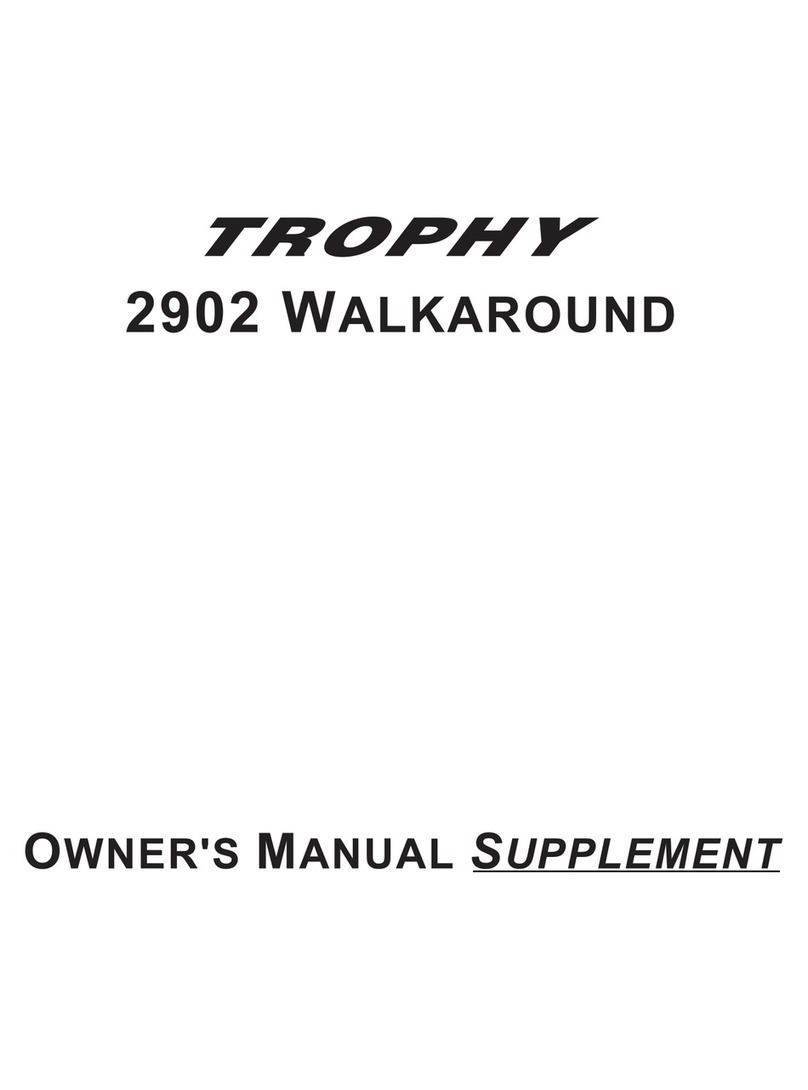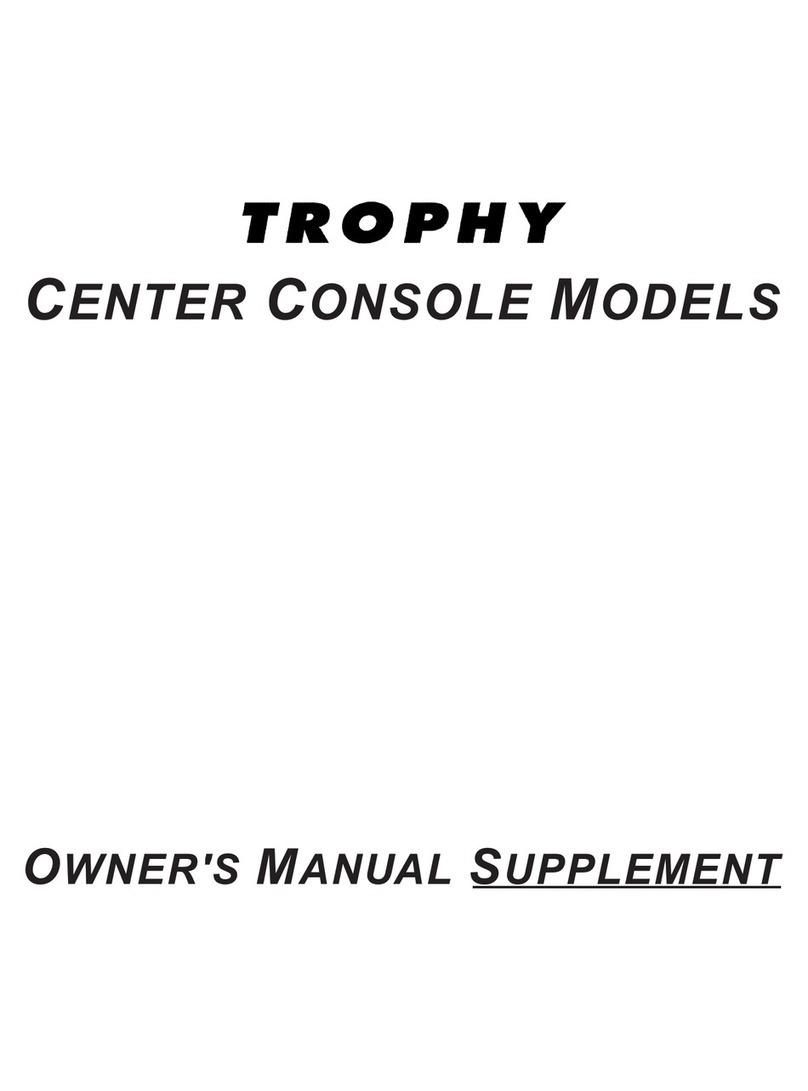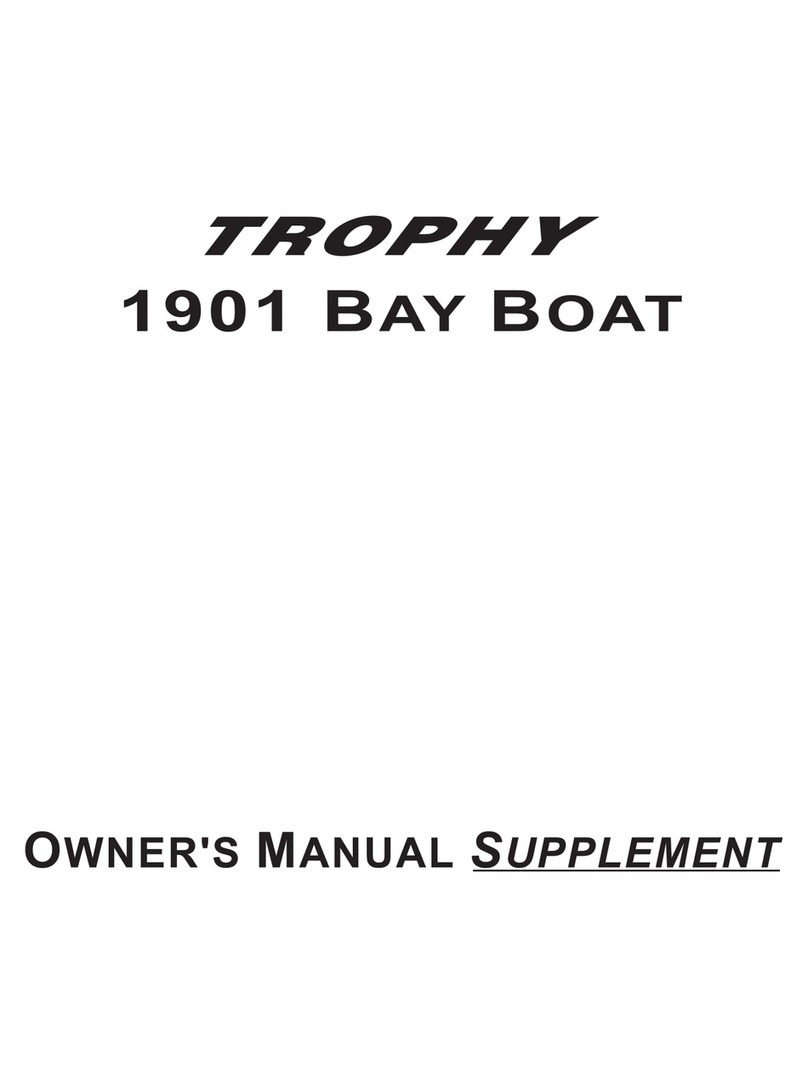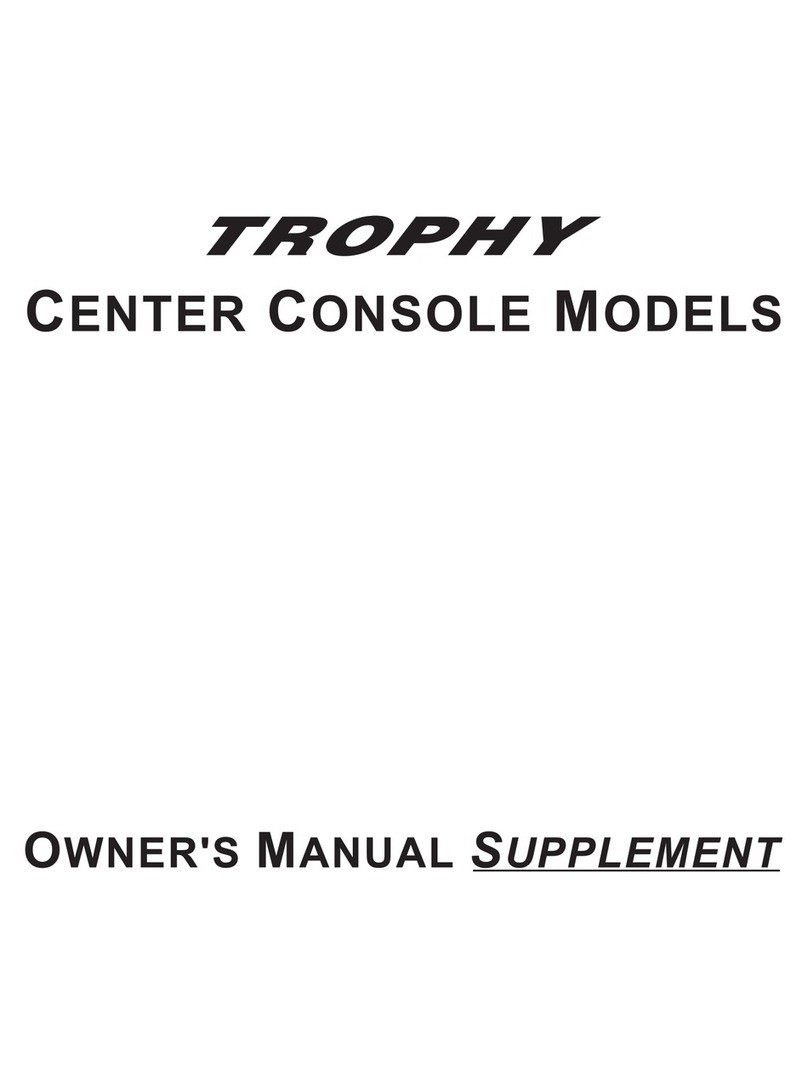
TROPHY Owner’s Manual Supplement
1901 Bay - 2101 Bay - 2401 Bay
8
Your boat is designed, engineered and manufactured
in accordance with applicable recommendations and
guidelines of the American Boat and Yacht Council
(A.B.Y.C.) and certified by the National Marine
Manufacturers Association (N.M.M.A.).
The wood free (no rot) construction and hand laid
fiberglass hull with full liner combined with a high
density composite transom assure you, the owner,
many years of dependable, low maintenance boating
pleasure.
Construction Standards
When your Boat needs to be serviced or regular
maintenance is required, it should be taken to an
authorized Trophy dealer.
If a problem is not handled to your satisfaction:
Discuss any warranty related problems directly with the
service manager of the dealership or your sales person.
Give the dealership an opportunity to help the service
department resolve the matter for you.
Servicing Your Boat
All boats must comply with federal regulations regarding
maximum capacities. The certification plate located
near the control console indicates the maximum weight,
number of persons, and horsepower your boat is rated
to handle.
Manufacturer’s Certification
CE Mark Certification Design Category
A (Ocean): Designed for extended voyages where
conditions may exceed wind force 8 on the Beaufort
scale (47 mph and above) and significant wave heights of
4 meters (13.12 feet) and above, and vessels largely
self-sufficient.
B (Offshore): Designed for offshore voyages where
conditions up to, and including, wind force 8 (39-46
mph) and significant wave heights up to, and including
4 meters (13.12 feet) may be experienced.
The number of persons on board must be reduced if you
go out in poor weather and rough water.
The information present on the certification plate does
not relieve the operator from responsibility. Use common
sense and sound judgement when placing equipment
and/or passengers in your boat.
AnNMMACertificationmeans that your boat has been
judged by the National Marine Manufacturers Association
to be in compliance with applicable federal regulations
and American Boat and Yacht Council standards.
ACanada Conforming Sticker means that your boat has
been certified to comply with construction standards for
small vessels by Transport Canada.
An AustralianBuilder’splatemeans that your boat
has been certified to comply with safety standards set
by the National Marine Safety Committee.
A CE mark means that your Boat has been certified
with the applicable international Organization for
Standardization directives.
C(Inshore):Designed for voyages in coastal waters, large
bays, estuaries, lakes and rivers where conditions up to,
and including, wind force 6 (25-31 mph) and significant
wave heights up to, and including, 2 meters (6.56 feet)
may be experienced.
D (Sheltered waters): Designed for voyages on small
lakes, rivers and canals where conditions up to, and
including, wind force 4 (13-18 mph) and significant wave
heights up to, and including, 0.5 meters (1.64 feet) may
be experienced.
The significant wave height is considered to be the
primary factor for determining design category. Other
parameters ( e.g. meteorological ) are descriptions of when
these wave heights may be expected to occur.
It is imperative that you follow the
recommendations listed on your capacity plate
regarding the maximum amount of weight
the boat can safely carry as well as the design
category of your vessel.
!WARNING


































